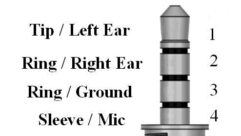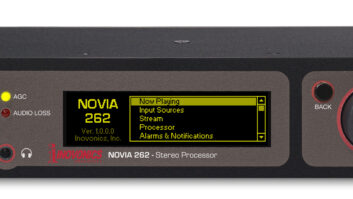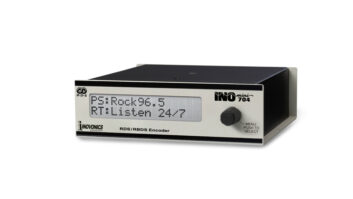Field Report: Inovonics David IV
Jul 1, 2012 1:00 AM, By Jeff Smith, CBRE
I can’t count the number of times I have needed a simple workhorse of a processor to use on streams or HD Radio multicast channels. Recently, I was able to try the David IV from Inovonics, which received a 2012 Radio magazine Pick Hit award at the NAB Show, and thought it would be ideal for just such a use. The David IV is a five-band processor that has lots of bells and whistles, and includes composite, AES3 and analog ins and outs as well as inputs for RDS.

The unit itself is very simple to setup. All configurations can be done via two different methods: the front panel or online using the provided software. Both methods allow the user to adjust AGC, high-pass filters, stereo enhancement, the five-band processor and many more options. The five-band processor is really where most of the David IV’s work is done. It allows each band to run independently or with a varying degree of coupling, which can create some very unique sounds for the station. Add that to the compression and equalization that is available to the five bands and you can get something that sounds really nice.
Limiting is also configurable in the unit. The David IV uses broadband limiting as well as “adaptive pre-emphasis.” Both allow users to control the program peaks however they see fit. The broadband limiting works on any of the David IV’s outputs, no matter what the audio may be; 20Hz tone, talk or music.
Take control
As stated before, all these adjustments are available using the front-panel display and dial next to it. Also on the front panel are meters displaying the input level, AGC, five-band, output level and MPX level. The bright, clear display gives a concise indication of what the unit is doing. In addition to the front panel, you have the option of accessing the unit via an Ethernet connection to configure it with the provided software.
Performance at a glance� Adjustable gain-riding AGC
� Five-band compressor
� Inovonics Polarity Independent Peak Processing limiter
� Low-latency DSP design
� Low-bass enhancements
When hooking the unit up to your network, you have the option of assigning it a static IP address or using DHCP. After the Inovonics software is installed on a computer, connect to the IP address of the DAVID IV and all the functionality of the unit is on the PC. I like this option, as I find it much simpler to configure the unit this way, as opposed to using the front-panel display. The software can also save unit settings to restore them or transfer them to another processor. The software is included on a CD with the unit. The processor can save up to 20 user presets.
Factory PresetsAdult Cont.�����JazzAlternative�����Latin/SalsaBollywood�����New AgeCont. Christian�����OldiesClassic Hits�����PopClassic Rock�����Reggae/IslandClassical�����RockCountry�����Samba/BrazilianEasy Listening�����TalkElectronic / Dance�����Top 40Exitos�����UrbanHip Hop / Rap�����VarietyFlat������
– continued on page 2
Field Report: Inovonics David IV
Jul 1, 2012 1:00 AM, By Jeff Smith, CBRE
The process
The five-band processor splits the program into five frequency bands. Each band imparts both dynamic compression and adjustable static gain to apply fixed equalization and other control of the program audio. Sub-bass program frequencies undergo independent dynamic compression, expansion, selective clipping and filtering for control over both static rumble and dynamic punch of the bottom-end components. Fast high-frequency limiting and distortion-cancelled clipping are utilized to provide independent amplitude control of program frequencies subjected to the FM pre-emphasis. The idea is to help preserve program brightness and clarity despite power bandwidth constraints inherent in FM broadcasting.

A user-programmable high-pass filter attenuates sub-audible noise that could compromise modulation efficiency. The filter is adjustable between 20Hz and 65Hz. The AGC is quasi-average-responding with a capture/correction range of �18dB. Positive AGC gain may be truncated to any value between 0dB and +18dB, and the correction rate of the AGC is programmable.
The stereo enhancement effectively broadens the soundstage for the stereo program and the center-channel component independently. Up to 3dB of clipping may be applied to the composite/baseband signal. Clipping is performed before the injection of the stereo pilot and RDS subcarrier.
Inovonics831-458-0552
inovonicsbroadcast.com
[email protected]
The unit includes the Inovonics exclusive Polarity-Independent Peak Processor (PIPP). With PIPP, the program audio waveform is split into positive-going and negative-going components. Each of these signals is then independently limited to a peak value that corresponds to 100 percent carrier modulation (in their respective directions), and the components then recombined. The purpose of this somewhat roundabout exercise is to optimize carrier modulation regardless of waveform asymmetry. The PIPP limiter can be disabled if desired.
Overall, I found the David IV to be a very functional processor. I really liked the fact that it starts passing audio almost immediately after booting up. That is a feature not seen in many other processors. I used the David IV on a country-formatted HD2 channel and it performed very well. It let me build the sound I wanted and did not color the audio at all. I’m sure many people will find a good use for the David IV in their audio facilities.
Smith is the chief engineer of WEMP 101.9, New York.
July 2012
AVB for radio, a tour of WZIP-FM, update on translator rules, and Field Reports on the Inovonics David IV and Audio-Technica AT2005USB…










